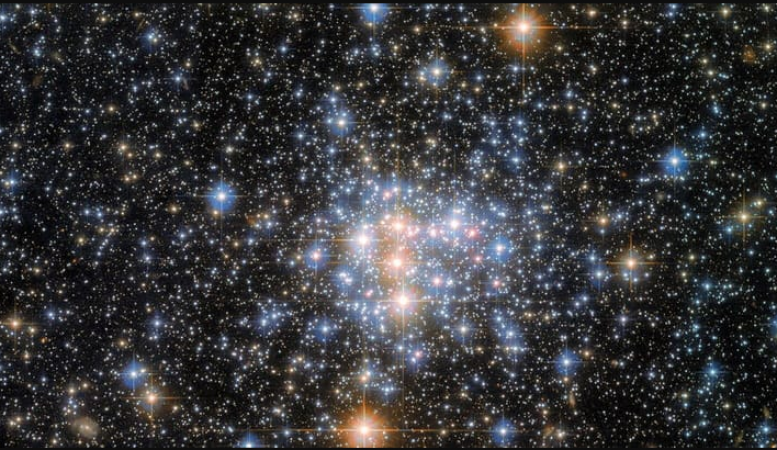
USA: A star-studded image of a small region in the Small Magellanic Cloud dwarf galaxy was taken by NASA's Hubble Space Telescope (SMC).
The open star cluster NGC 376 is the focal point of the image. Its mass is about 3,400 times that of the Sun. One of the Milky Way's closest neighbors is the SMC, which lies 200,000 light-years from Earth.
Only a small part of the SMC, which contains hundreds of millions of stars, is visible in the Hubble image. Both the SMC and the Large Magellanic Cloud (LMC) are pairs of celestial bodies, and the Southern Hemisphere offers the best views of both.
Also Read: The leader of Hong Kong will request the China National Anthem through Google
However, they can also be seen from some northern regions. A "brilliant blue" star cluster in the LMC's constellation Mensa was recently photographed by Hubble.
Compared to globular clusters, open clusters are much smaller and less densely populated. They are young stars who are not tightly bound.
The stars in globular clusters are tightly bound by gravity and are comparatively massive. They are so packed with stars that their centers appear as a continuous blur of stars.
Also Read: Users can now record the screen with the new Windows 11 feature
More than 150 globular star clusters can be found in the Milky Way galaxy, where we live.
NGC 376 is an open cluster, so individual stars can be seen even in the most populated areas of the image. Two Hubble instruments, the Wide Field Camera 3 (WFC3) and the Advanced Camera for Surveys, were used in two separate probes that produced the data from this image (ACS).
The first study, which employed the ACS, looked at some star clusters in the SMC and aided astronomers in exploring a variety of topics, such as the prevalence of low- and high-mass stars in different environments.
Also Read: Over Norwegian skies, dazzling pink auroras were photographed
The second study, which included both WFC3 and the ACS, sought to answer fundamental questions about precisely where, when, and how stars form.